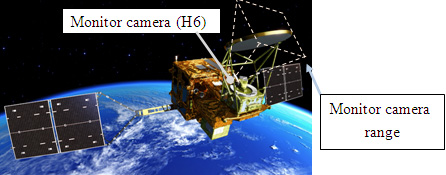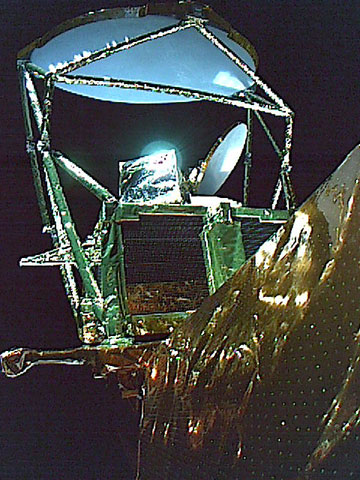UPDATE: AMSR2 has been successfully spun up to its initial spin rate of 4 rpm (it will later be spun up to 40 rpm for normal operations). It will take 45 days for the Shinzuku satellite to be maneuvered into the A-Train satellite constellation; about 3 months for complete instrument checkout.
Now this is a real treat…the first on-orbit image I am aware of taken from the spacecraft of an Earth-observation instrument ON the spacecraft itself (all imagery courtesy of JAXA).
The first image is an artist’s rendering of the Japanese Shizuku satellite (aka GCOM-W) with the location of the camera indicated:

The second is an actual photo from that camera of the AMSR2 instrument after its antenna has been deployed from its stowed position:

I’m not sure of the schedule regarding when calibrated data will start flowing operationally. The calibration design of AMSR2 has been improved, and I’m sure JAXA will want to be pretty confident of their calibration before data are released. Then, the algorithms which convert the calibrated data into products such as sea ice parameters and SST will have to be tested.
Well before those events happen, though, I’m sure we will see some “first light” imagery from the instrument.
A variety of Shizuku photos and artist renderings are available here.

 Home/Blog
Home/Blog



